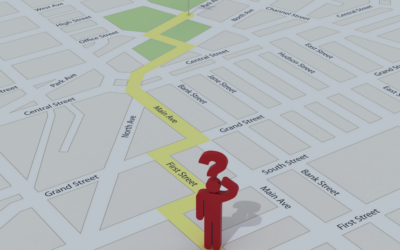Unless you deal with it every day, like we do, ERP licensing can often seem confusing. Even though Microsoft has worked to simplify licensing over the last several years, if you’re not familiar with how it works, Dynamics GP licensing is no exception.
So, for those of you considering Dynamics GP for your business, but aren’t sure what you’re licensing options are, or which one might best fit your needs, you’ve come to the right place. Today, I am going to cover the three main components of Dynamics GP licensing, deployment methods, software version/pack and user types.
Dynamics GP Licensing Part 1: Deployment Methods
First, when deciding which Dynamics GP licensing option is best for you, you’ll want to consider how you want to deploy the software. That is, do you want to buy your own server and run the software on it, or do you want to have someone else run the software on their server for you.
If you choose to run the software on your own servers, keep in mind that you will be responsible for maintaining your own server, and handling software maintenance such as upgrades, security patches and hot fixes. Of course, if you don’t have the internal IT resources to handle these things on your own, you can always outsource them to a consultant. Just be sure to consider these costs when creating your ERP project budget and deciding which licensing option is going to be best for you.
Or, if you do not want the responsibility and expense of buying and maintaining your own servers, you could choose instead to find a hosting partner who will run Dynamics GP for you on their own servers. Generally, a you pay monthly fee for this type of service. In return your hosting provider will handle the server maintenance, take care of software upgrades, hot fixes, security patches, etc. for you. Because hosting is a turnkey solution, this is often the most popular option for businesses with limited IT resources.
Dynamics GP Licensing Part 2: Module Bundles/Packs
The next facet of Dynamics GP licensing it’s important for new users to understand is how Dynamics GP is packaged. The functionality in Dynamics GP is divided into a variety of modules. For the last several years, Microsoft has packaged these modules into four bundles called packs. Each pack offers specific functionality. There’s the Starter Pack, the Extended Pack, Extended Human Resources and Payroll Pack and the Customization Pack.
The Starter Pack offers everything many businesses need from their ERP system. It includes financial management, business intelligence and reporting, supply chain management and more. The Extended Pack builds on this, adding manufacturing, project management and customer relationship management capabilities, plus advanced business intelligence and supply chain features. The Extended Human Resources and Payroll pack delivers everything you need to manage your business’ most important resource, your employees. Use it to handle payroll, benefits and more. Finally, as the name suggests, the Customization Pack offers tools for customizing Dynamics GP to fit your unique needs.
Not sure which pack(s) you need? See a complete list of all the modules included in each Dynamics GP pack.
Dynamics GP Licensing Part 3: User Licenses
When it comes to Dynamics GP licensing there are three different types of users you can purchase. They are Full User, Limited User and Self-Service User. As you might expect, Full Users get unrestricted access to your organization’s Dynamics GP software. These are for individuals who will depend on Dynamics GP to do key aspects of their jobs. For most companies, this is at a minimum some members of their accounting/finance staff. Of course, if you use Dynamics GP to manage things like your supply chain, human resources, or projects, some staff in those roles will often be assigned Full User licenses as well. But, since these licenses are the most robust, they’re also the most expensive.
So, in order to help customers keep costs down and avoid unnecessary human error, Microsoft offers two other license types for Dynamics GP.
Next is the Limited User. Limited Users can enter a limited set of information such as requisitions, payroll expenses, timesheets, timecards and project expenses. In addition, they can also view inquiries, reports and smart lists. Limited User accounts can be set up for individuals in a variety of roles, including inventory, sales, purchasing, financial and payroll.
Put simply, Limited Users can only enter specific types of information and report on the transactions and files they had been given access to. At an 80% reduction in cost compared to Full User licenses, these can be a real budget saver if you have lots of employees who just need to access certain data to report on it.
Lastly, there is the Self-Service User. Self-Service Users are designed for users that need to only enter their own information, specifically their timesheets, project expenses, timecards and requisitions. Many project centric organizations use Dynamics GP to keep track of their project expenses, including their employees’ time spent working on each project. Self-Service Users are perfect for those employees whose only reason for accessing Dynamics GP is to enter their own time and project related expenses such as mileage, lodging or meals.
Want to Dive Deeper Into Dynamics GP Licensing?
This blog post takes an in depth look at the user types available for Dynamics GP, what makes them unique and who they are best for.
Still have questions about Dynamics GP licensing? Let us help you choose the best options for your business. Our friendly experts have more than 30 years’ experience helping businesses of all shapes and sizes make the most of Dynamics GP.



